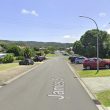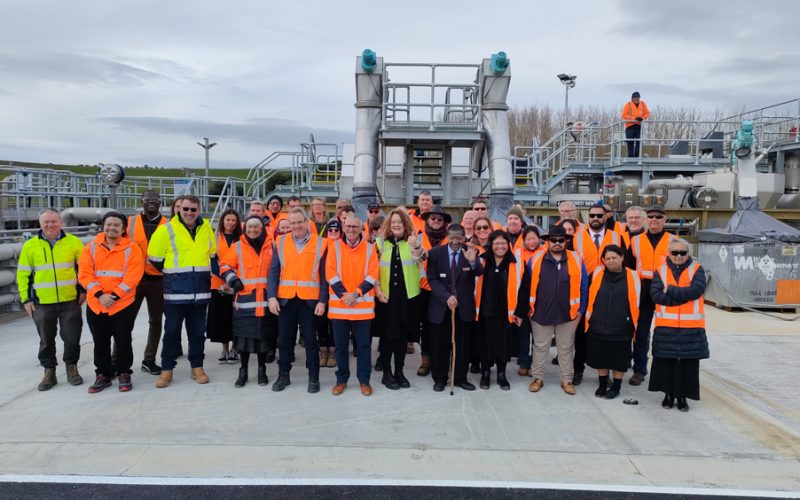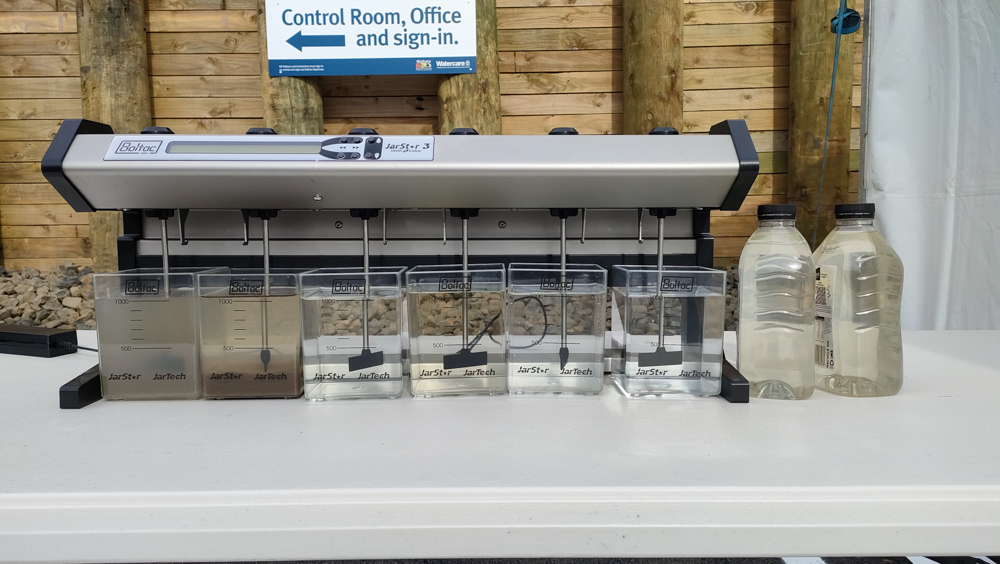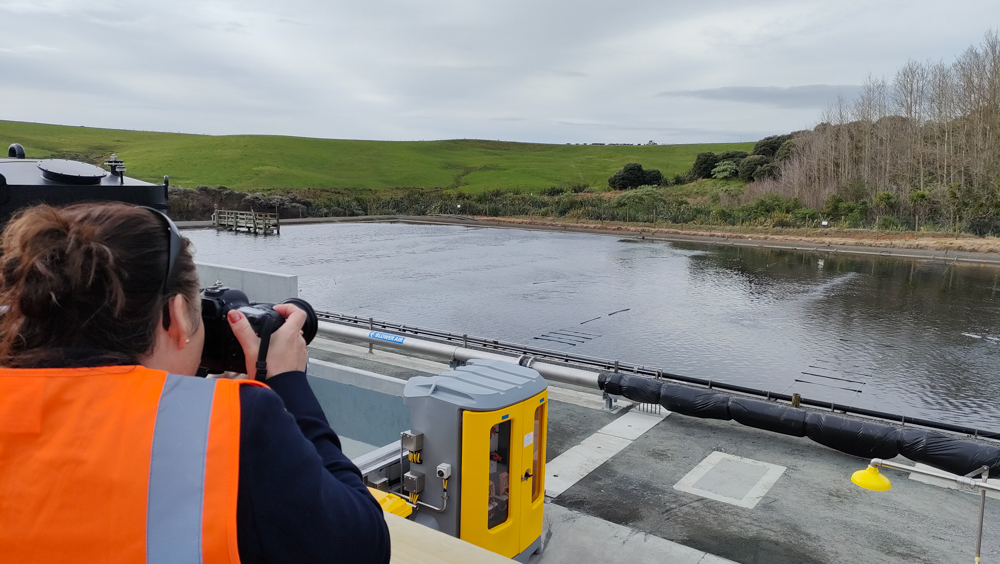The opening of Raglan’s new $30 million wastewater treatment plant marks not just an infrastructure upgrade, but the latest chapter in a five-decade struggle to protect Whaingaroa Harbour.
The story began in 1971, when Raglan’s 1,200 residents relied on septic tanks or composting toilets. Each night, trucks collected the waste and hauled it to the site where Xtreme Zero Waste now stands. When council began searching for a permanent treatment site, its first proposal placed the facility beside the local marae.
“You can imagine what our people thought about that,” said Tainui o Tainui environmental spokesperson Angeline Greensill.
The plan shifted, but in 1974 council settled on Te Rua-o-Te-Ata – Raglan’s most sacred site, home to Te Atai o Rongo and the resting place of Whaingaroa’s taniwha. Hapū fought the decision. “At the time, the council was the regulator and the applicant,” Angeline recalled. “They heard us – but they didn’t hear us.”
The decision went ahead – a desecration that left the community carrying “that shame for 50 years,” she said. Even today, some whānau refuse to connect to the wastewater network because it still discharges into the moana.
From Ponds to ‘Big Kombucha’
From the old plant – little more than a screen, two ponds and a couple of sheds – to a purpose-built facility, the transformation is stark. The new system screens solids from incoming wastewater, then runs it through an aerated biological treatment stage where beneficial bacteria grow on long filament-like strands, consuming viruses, pathogens and organic matter.
Project manager Peter Crabb likens it to “a big kombucha.” After biological treatment, ultraviolet (UV) disinfection neutralises any remaining pathogens, producing water “one step away from drinking water standard.” At peak strength, Peter said, the bacteria could even clear a fungal infection like athlete’s foot.
Speaking on Raglan Community Radio, Whaingaroa Ward Councillor Lisa Thomson reflected on Tuesday’s official opening, describing it as both uplifting and deeply emotional for hapū who have spent decades opposing the original plant and its outfall into the Moana.
She recalled Kaumatua Atutahi Riki’s words on the day: the mamae – the deep hurt and shame – of having human waste processed on a sacred site was something whānau and hapū had been forced to bear in silence for much of that time, while still advocating for change.
Lisa admitted it took courage to immerse her hand in the treated water – an act with particular cultural significance for Māori – but she said it proved how far the technology had come. The plant will take six to ten months to reach full biological capacity and is designed to serve a population twice Raglan’s current size.
At the opening, Mayor Jacqui Church acknowledged the long and complex path to delivering the project and singled out Lisa and fellow councillor Eugene Patterson, Chair of the Infrastructure Committee, for their persistence in getting the upgrade across the line.
“Part of the journey – we’re not there yet”
For Angeline, the new plant is a major step forward but not the end goal. “Our aspiration has been for 50 years to get wastewater out of the moana,” she said. “It does not belong there. It’s a marine environment – our people were eaters of food from that space – and our aspiration is to restore the harbour and get the pipeline out to Wainui Reserve to the land-based treatment system.”
She described the plant as “awesome” and thanked Watercare and all who contributed to its delivery. Yet her urgency was clear: “We’ve already planted trees… the gully’s ready for your guys’ water to go in – somebody hurry up!”
Once the land-based system is in place, Angeline said it will need careful monitoring to confirm it works and to see if further capacity is required. If so, Raglan may need to “look to the east” for additional sites, as “our land on this side can’t take everything that’s going to happen in the future.”
Despite the unfinished journey, she called the opening “a great day” and looked forward to “a huge celebration” when the harbour is free from wastewater discharges.
Building for floods, not just summer
Lisa said a common misconception was that summer tourism puts the greatest strain on Raglan’s wastewater system. In reality, the biggest pressure comes during winter storms, when heavy rain infiltrates sewer lines and risks overloading the ponds.
The ponds remain part of the new system to cope with extreme weather – storing excess wastewater when the plant reaches capacity so it can be treated later. About three weeks ago, a major downpour brought them close to overtopping, which would have released untreated sewage into the harbour.
To prevent that, the plant has an emergency backup: discharging highly treated wastewater into the harbour on an incoming tide, under strict conditions in its resource consent. This controlled release relieves pressure on the ponds, and the water, Lisa stressed, is now “super clean.”
Technical Process: How Raglan’s New Wastewater Plant Works
- Screening & Grit Removal – Filters out large solids and grit on entry.
- Biological Treatment – Wastewater flows through aerated strands where beneficial bacteria consume viruses and pathogens.
- Microbial Devouring – Bacteria populations grow stronger over time, breaking down harmful microorganisms and organic matter.
- UV Disinfection – High-intensity ultraviolet light neutralises any remaining pathogens.
- Polishing & Discharge – Treated water meets a quality just below drinking standard and is discharged under strict consent conditions until the Wainui Reserve pipeline is ready.
- Peak Performance Timeline – Six to ten months for bacteria to fully mature and the plant to reach optimum treatment capability.
Future-Proofing Raglan’s Water
Lisa stressed that the wastewater upgrade is only one piece of a much bigger picture that includes stormwater, freshwater, pumping stations and long-term storage. Plans are underway for a new water reservoir near Waipatukahu (Riki) Spring, twice the size of the current one. This will be trickle-fed to stay within consent limits while giving the town greater storage capacity for growth and emergencies.
Riki Spring remains Raglan’s main water source, but it is finite. Climate change or an earthquake could threaten its reliability, so alternative options must be considered. In the past, council avoided promoting rainwater for household use due to potential health liabilities, but Lisa now says the resilience benefits warrant reconsideration.
Elections, Māori Wards and Misinformation
As the local elections approach, Raglan voters will choose a mayor, a councillor, community board members, two regional councillors and decide in a referendum whether to retain Māori wards.
Lisa, a strong advocate for Māori representation, pushed back on claims that Māori voters get “extra votes.” “It’s exactly the same – one vote for mayor, one for your ward councillor and one for your community board,” she said, noting that her own whānau cannot vote for her as they are on the Māori roll, not the general roll.
She also criticised lobby group Hobson’s Pledge for using the image of a Māori woman without consent in anti-Māori ward advertising material, calling it “despicable.”
Community Relations and Council Processes
The mayoral awards presentation caught some by surprise, with neither the Raglan Community Board nor councillor Lisa informed ahead of time. Supporters of the recipients began arriving an hour before the board meeting, seeking entry to the venue. Board chair Dennis Amoore opened the meeting while the presentation was taking place outside the Supper Room. The Mayor arrived about an hour later than the time reportedly given to the award recipients.
Those awards recognised the long service of Roy Haar (25 years) and Wayne Morris (30 years). Appointed by the Governor-General, JPs perform essential voluntary duties, from witnessing signatures and certifying documents to administering oaths, confirming identities and assisting in court processes.
On another note, Lisa also expressed frustration at media turning up unannounced to a site meeting about plastic fibres in the harbour, saying the resulting coverage gave a “negative spin” and she did not know who had tipped them off.
Looking Ahead
As campaigning ramps up, Lisa hopes events like Meet the Candidates forums take place before voting papers are delivered, giving voters full information before deciding.
Reflecting on the current council term, she praised its ability to work constructively despite differences, contrasting it with the public infighting seen at other councils. “We can disagree and still come to consensus,” she said. “That’s been the strength of this term.”







